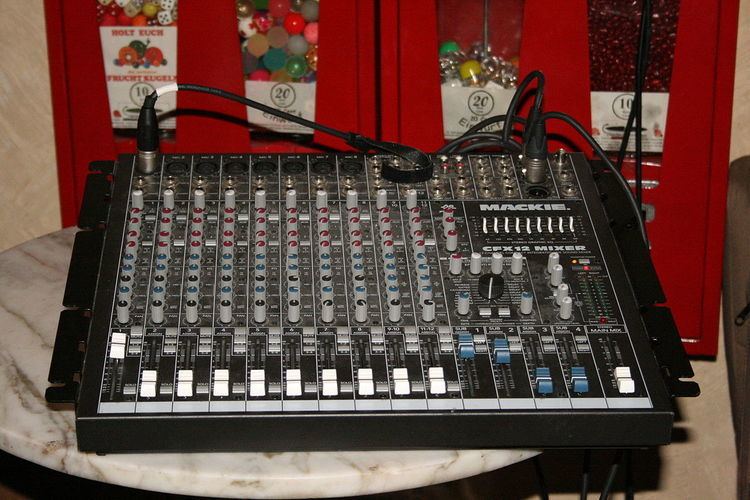 | ||
An aux-send (auxiliary send) is an electronic signal-routing output used on multi-channel sound mixing consoles used in recording and broadcasting settings and on PA system amplifier-mixers used in music concerts. The signal from the auxiliary send is often routed through outboard audio processing effects units (e.g., reverb) and then returned to the mixer using an auxiliary return input jack, thus creating an effects loop. This allows effects to be added to an audio source or channel within the mixing console.
Purpose
The routing configuration and usage of an aux-send will vary depending on the application.
Two types of aux-sends commonly exist: pre-fader and post-fader. Pre-fade sends are not affected by the main slider for the channel, while post-fade ones are.
In a common configuration, a post-fade aux-send output is connected to the audio input of an outboard audio effects unit (most commonly a temporal effect such as reverb or delay; compressors and other dynamic processors would normally be on an insert instead). The audio output of the outboard unit is then connected to the aux-return input on the mixing console (if the recording console has one), or as an alternative it can be looped back to one of the input channels on the mixing console. The reason that a post-fade is used is to avoid channels than are zero gain on the sliders from contaminating the effects return loop.
Mixing consoles most commonly have a group of aux-send knobs in each channel strip, where one knob corresponds to each aux-send on the board. The controls enable the operator to adjust the amount of signal that will be sent from its corresponding channel into the signal bus routed to its corresponding aux-send output.
A benefit of using an aux-send is that it enables the signals from multiple channels on a mixing console to be simultaneously routed to a single outboard device. For instance, audio signals from all the channels of a sixteen-channel mixing console can be routed to a single outboard reverb unit so that all channels are heard with reverb.
The aux-sends from a group of inputs can also be routed to an amplifier and then sent to monitor speakers so that the onstage musicians can hear their singing or playing. The benefit of using the pre-fade aux-send function is that the volume of the vocals or instruments in the monitor mix does not have to be the same as the "front-of-house" mix for the audience. Musicians whose voices are barely or not even present in the "front-of-house" mix can have their sound clearly and loudly sent through a monitor speaker so that they can hear themselves singing and ensure that their pitch and timing is correct.
